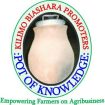In Kenya, indigenous chicken farming represents a return to traditional agricultural practices that blend heritage with modern sustainability. Unlike their commercial counterparts, indigenous chickens (locally known as “Kuku wa kienyeji”) are cherished not only for their unique flavors but also for their resilience and role in rural livelihoods. This blog explores the significance of indigenous chicken farming in Kenya, its benefits, challenges, and future prospects.
Understanding Indigenous Chickens
Indigenous chickens in Kenya are breeds that have been reared for generations, adapting to local climates and conditions. Unlike commercial broilers and layers, which are often bred for rapid growth and high egg production, indigenous chickens are valued for their hardiness and ability to thrive in varied environments.
Key Characteristics:
- Adaptability: Indigenous chickens are well-suited to Kenya’s diverse climates, from highland areas to semi-arid regions.
- Disease Resistance: They generally exhibit better resistance to local diseases and parasites compared to commercial breeds.
- Flavor and Quality: Known for their rich taste and nutritional value, indigenous chickens are a staple in Kenyan cuisine.
The Role of Indigenous Chicken Farming
**1. Economic Significance: Indigenous chickens contribute significantly to the livelihoods of many Kenyan families, especially in rural areas. They provide a steady source of income through sales at local markets and contribute to household food security. The low cost of rearing indigenous chickens compared to commercial breeds makes them an accessible option for smallholder farmers.
**2. Cultural Value: Indigenous chickens are deeply embedded in Kenyan culture. They are often used in traditional ceremonies, celebrations, and as a form of social capital. Their presence at family gatherings and cultural events underscores their importance beyond mere economic value.
Farming Practices
Indigenous chicken farming in Kenya is typically characterized by low-input, extensive systems, but there are opportunities for improvement and modernization.
**1. Housing and Management:
- Free-Range Systems: Many farmers use free-range systems where chickens roam freely during the day and return to a simple coop at night. This method benefits from natural foraging but can be vulnerable to predators.
- Housing: Basic shelters protect chickens from harsh weather and predators. Improved housing designs can enhance biosecurity and comfort.
**2. Feeding:
- Natural Foraging: Indigenous chickens primarily forage for their food, which includes insects, seeds, and plants. Supplementary feeding with locally available feed ingredients can boost growth and egg production.
- Nutritional Supplements: Incorporating nutritional supplements and balanced feeds can enhance overall health and productivity.
**3. Health Management:
- Disease Control: Regular health checks and vaccinations are crucial. Indigenous chickens are relatively disease-resistant, but preventative measures against common diseases like Newcastle disease and fowl pox are essential.
- Parasite Management: Proper management practices, including deworming and control of ectoparasites, are vital for maintaining flock health.
Challenges Facing Indigenous Chicken Farming
Despite their advantages, indigenous chicken farming in Kenya faces several challenges:
**1. Disease and Parasites: Even though indigenous chickens are generally hardy, they are not immune to diseases and parasites. Outbreaks can lead to significant losses if not managed effectively.
**2. Market Access: Farmers often face difficulties accessing profitable markets due to poor infrastructure and market information. Improving market linkages and providing farmers with better access to information can help.
**3. Limited Research and Extension Services: There is a need for more research and extension services tailored to indigenous chicken farming. Enhanced support can help farmers adopt best practices and improve productivity.
Opportunities and Future Prospects
The future of indigenous chicken farming in Kenya looks promising, with several opportunities for growth and development:
**1. Value Addition: Developing value-added products such as processed chicken or specialty eggs can open new market opportunities. This includes exploring niche markets and branding indigenous chicken products.
**2. Improved Practices: Incorporating modern practices and technologies, such as better housing, nutritional management, and disease control, can enhance productivity and profitability.
**3. Support and Training: Increased investment in training and extension services can help farmers adopt best practices and overcome existing challenges. Government and NGO support can play a crucial role in this regard.
**4. Sustainable Practices: Promoting sustainable farming practices that align with environmental conservation can further boost the resilience and long-term viability of indigenous chicken farming.
Conclusion
Indigenous chicken farming in Kenya is more than just an agricultural activity—it’s a connection to tradition, culture, and local resilience. As the sector evolves, there is significant potential to enhance productivity, market access, and overall profitability while preserving the unique qualities that make indigenous chickens special. By embracing both traditional knowledge and modern innovations, Kenya can build a robust and sustainable indigenous chicken farming industry that benefits farmers, consumers, and the environment alike.



